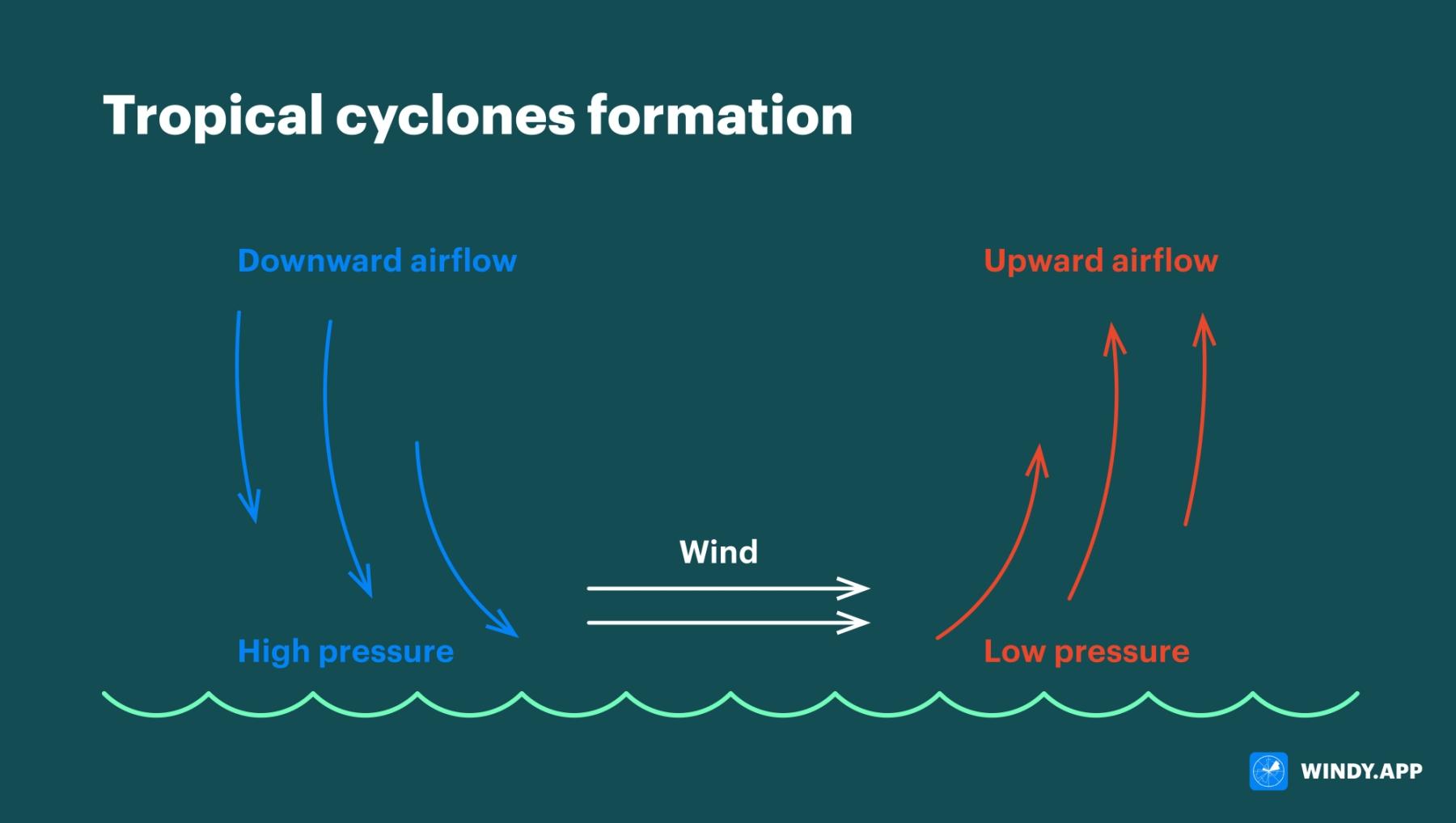
How tropical cyclones (hurricanes and typhoons) form
Tropical cyclones are a type of low-pressure weather system. In this new lesson of the Windy.app Meteorological Textbook (WMT) and newsletter for better weather forecasting you will learn more about what Tropical cyclone is and how it works.
They occur over warm seas and bring powerful thunderstorms, heavy rainfall, and storm force winds. The name "tropical cyclone" is scientific. Depending on the part of the world, they are simply called hurricanes (United States and Latin America) and typhoons (Asia and Australia). In this lesson, we will take a separate look at how these cyclones form.
Tropical cyclones are "fed" with warm and humid air. They form over the ocean due to hot temperatures and water that evaporates from the surface of the ocean. Warm humid air rises, creating a "deficit" of air near the surface. In its place new air comes, which also heats up and rises. This process takes up more and more territory. Due to the constant flow of humid and warm air, cloudiness is intensely formed, precipitation falls, and the wind increases.

Tropical cyclones formation. Valerya Milovanova / Windy.app
Now let's take a look what the coriolis force is. Due to the fact that the planet rotates around its axis, the force of coriolis acts on all moving objects, including air masses. It works like this: if a body moves along the surface of the earth, it is deflected to the right all the time in the Northern Hemisphere, and to the left - in the Southern Hemisphere.
Let's get back to the tropical cyclones. Thanks to the coriolis force, the air going to this funnel starts to rotate. Therefore, the top of a tropical cyclone looks like a funnel. A tropical cyclone loses its strength when it is no longer in contact with the warm and humid surface of the ocean. For example, if it passes over a cold current, or goes to land, it will weaken and begin to collapse.

Coriolis force. Valerya Milovanova / Windy.app
Text: Windy.app
Illustration: Valerya Milovanova, an illustrator with a degree from the British Higher School of Art an Design (BHSAD) of Universal University
Cover photo: Rik Buiting / Unsplash
You will also find useful
Latest News
Professional Weather App
Get a detailed online 10 day weather forecast, live worldwide wind map and local weather reports from the most accurate weather models.
Compare spot conditions, ask locals in the app chat, discover meteo lessons, and share your experience in our Windy.app Community.
Be sure with Windy.app.



